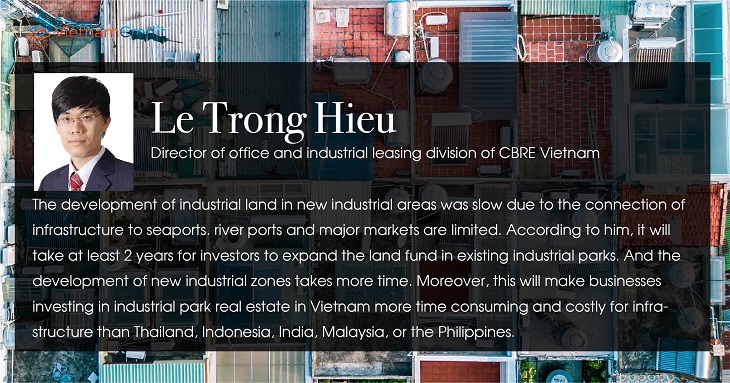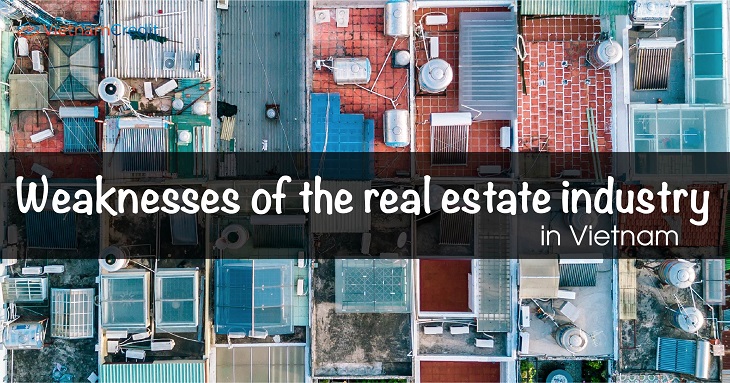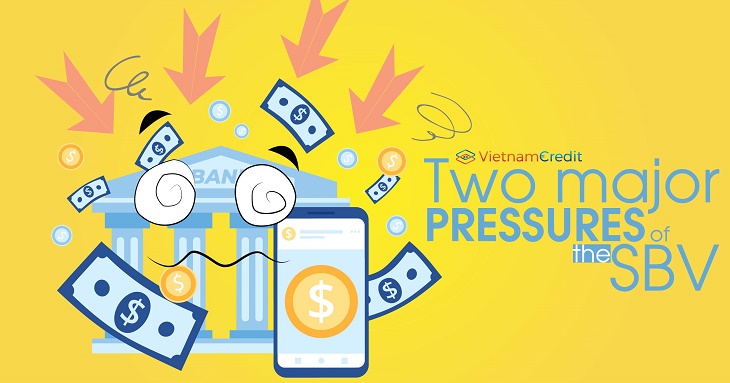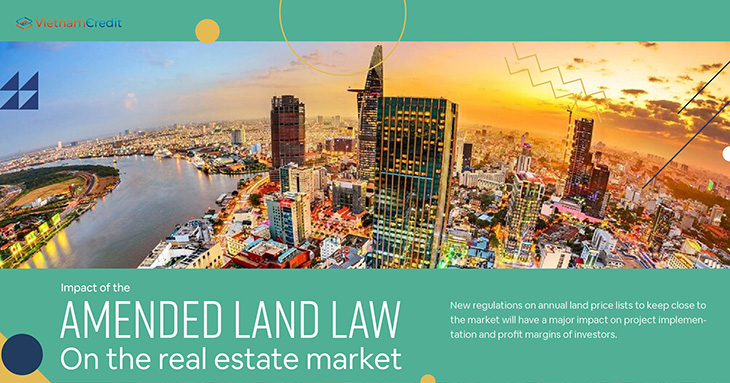Experts say that the absence of a real system for industrial real estate is considered a minus point when receiving FDI
CBRE Vietnam said that the Vietnamese market has almost no new land to attract foreign investors in the short term. The supply of industrial land in locations with good infrastructure - close to important ports and large urban areas - is limited. The occupancy rate of industrial parks in key industrial areas has reached over 90%. In addition, growth prospects for industrial land are low due to difficulties in expanding the existing supply.
Le Trong Hieu - Director of office and industrial leasing division of CBRE Vietnam - said that the development of industrial land in new industrial areas was slow due to the connection of infrastructure to seaports. river ports and major markets are limited. According to him, it will take at least 2 years for investors to expand the land fund in existing industrial parks. And the development of new industrial zones takes more time. Moreover, this will make businesses investing in industrial park real estate in Vietnam more time consuming and costly for infrastructure than Thailand, Indonesia, India, Malaysia, or the Philippines.
Dr. Su Ngoc Khuong - Senior Director of Savills Vietnam - shared that transport infrastructure, warehousing, and transportation of goods are currently factors that can hinder the decision to transfer the investment to Vietnam. South of the leading manufacturers in the world. In the North, enterprises located factories in industrial zones in Hung Yen, Bac Ninh, Bac Giang, and Hai Duong - localities located near the transport axis of Hai Phong and Hanoi - are hoping to reduce transportation costs. moved on. In addition, the major ports including Cat Lai port - the largest river port in Vietnam, Cai Mep port, and Hai Phong port cluster, have recorded a rapid increase in cargo volume last year due to the strong growth in export demand. Password. Therefore, traffic congestion becomes a problem despite the expansion and improvement of the ability to handle goods and transportation. "Traffic from Hanoi to Hai Phong is very convenient, but the way from Hai Phong to the seaport to export goods to foreign countries is not so," Mr. Khuong said.

In addition, reducing the cost of transporting goods from areas not directly connected to seaports such as Thai Nguyen and Vinh Phuc will be a difficult problem for businesses.
In the South, the distance from industrial parks in Long An, Dong Nai and Binh Duong to the seaport in Vung Tau is over 100 km. With industrial parks in Ho Chi Minh City, Mr. Khuong said, many businesses are currently unable to exploit the waterway system to reduce the proportion of goods transported on the expressways, although this locality owns 92 waterways. Local inland is longer than 598.7 km, 5 national inland waterways are more than 100 km. "Infrastructure construction activities in our country in recent years have focused only on the goal of real estate development, the completed roads are to buy and sell houses quickly," Mr. Khuong said and said Vietnam. There is no real infrastructure to serve industrial zones. According to Mr. Khuong, infrastructure is poor in quantity and quality will push transportation and warehousing costs to a high level, making investment costs in Vietnam less competitive than Thailand, Malaysia, Indonesia, and India.
Another factor that makes it difficult for Vietnamese industrial parks to catch the wave of production shift is the risk of environmental pollution. TS Dinh The Hien - an economist - said that only a few industrial parks invested by Honda and Samsung ensure standards of waste treatment and environmental protection.
For other industrial parks, especially industrial parks specializing in assembling products of low value in Binh Duong, the solid waste treatment is not really up to the standards, the working environment of workers is also not good.
On the macro, Mr. Le Trong Hieu said that the supply of raw materials and components for Vietnam's industries currently depends mainly on the Chinese market. The majority of products manufactured and assembled in Vietnam are exported to major markets such as the US, Japan, Europe, and South Korea.
Therefore, as long as the supply of raw materials or the export market is halted due to incidents similar to Covid-19, Vietnam's manufacturing and processing industry will be affected immediately.
>> Overview of Vietnam's Fishing Industry
Source: Vnexpress
























































